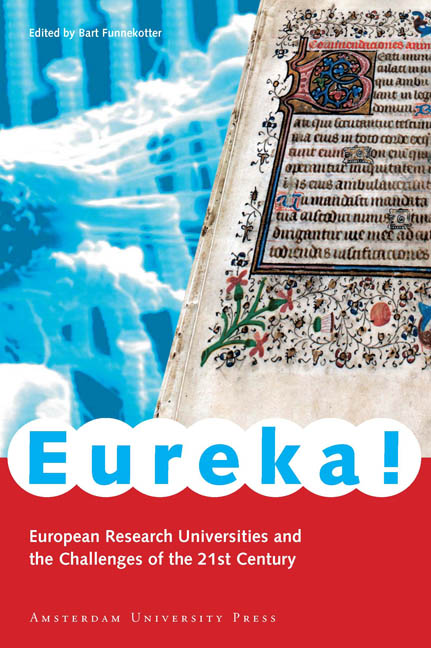Book contents
- Frontmatter
- Contents
- Foreword
- Introduction: Challenges of the Twenty-first Century
- Cambridge: Cambridge University
- Edinburgh: University of Edinburg
- Geneva: Université de Genève
- Heidelberg: Ruprecht-Karls-Universität
- Helsinki: Helsingin Yliopisto
- Leiden: Universiteit Leiden
- Louvain: Katholieke Universiteit Leuven
- Milan: Università Degli Studi Di Milano
- Munich: Ludwig-Maximilians-Universität
- Oxford: Oxford University
- Stockholm: Karolinska Institutet
- Strasbourg: Université Louis Pasteur
Heidelberg: Ruprecht-Karls-Universität
Published online by Cambridge University Press: 23 January 2021
- Frontmatter
- Contents
- Foreword
- Introduction: Challenges of the Twenty-first Century
- Cambridge: Cambridge University
- Edinburgh: University of Edinburg
- Geneva: Université de Genève
- Heidelberg: Ruprecht-Karls-Universität
- Helsinki: Helsingin Yliopisto
- Leiden: Universiteit Leiden
- Louvain: Katholieke Universiteit Leuven
- Milan: Università Degli Studi Di Milano
- Munich: Ludwig-Maximilians-Universität
- Oxford: Oxford University
- Stockholm: Karolinska Institutet
- Strasbourg: Université Louis Pasteur
Summary
University of Heidelberg in facts and figures:
Founded in 1386
26,742 students
7,362 staff
Budget € 463 million
‘Thank you for your attention.’ As soon as the closing words of the lecture are spoken a thunderous noise fills the hall: the sound of students rapping their knuckles on the benches as the grateful lecturer accepts their approbation. Welcome to Heidelberg – or to use its full name:Ruprecht-Karls-Universität, or Ruperto Carola. Founded on October 18, 1386, it is Germany's oldest university.
Eager to compete with Prague and Vienna, Kurfürst Ruprecht I had decided to found his own academy and, with permission from Pope Urban VI, he began by opening faculties for theology, law and philosophy; medicine soon followed. Semper apertus became the motto: the book of learning is always open.
More than six hundred years later, there are no fewer than fifteen faculties; those of law and medicine enjoy worldwide renown. Eight times a Heidelberg scholar has been awarded a Nobel Prize. The university is home to approximately 25,000 students spread over three areas: the humanities in the Altstadt, or historic town centre, medicine and psychology in the suburb of Bergheim and the science campus of Neuenheimer Feld.
In the Altstadt especially, the students tend to stand out, trendy shirts and flip-flops contrasting sharply with the picture-perfect streets and the plaques on nearly every house commemorating the countless great minds who lived or worked inside, or simply passed by.
Whatever your vantage point, it seems you can spot an ancient castle keeping watch over the valley. Architecture is a heady mix of mediaeval ruins and Renaissance addons. In the nineteenth century this area was the epicentre of the Romantic Movement. On the far side of the River Neckar, which divides the city in two, the Philosopher's path curls up the side of the mountain; Goethe, Schiller and Kleist are said to have gazed up at it dreamily.
And then there is the Karzer, the special university prison built in the nineteenth century for the incarceration of recalcitrant students. An agreement with the municipality stipulated that the university was responsible for the punishment of students who misbehaved. Disturbance of the peace, drunkenness or unruly duels could result in a sentence of between 24 hours and four weeks, depending on the seriousness of the offence.
- Type
- Chapter
- Information
- Eureka!European Research Universities and the Challenges of the 21st Century, pp. 50 - 61Publisher: Amsterdam University PressPrint publication year: 2005

